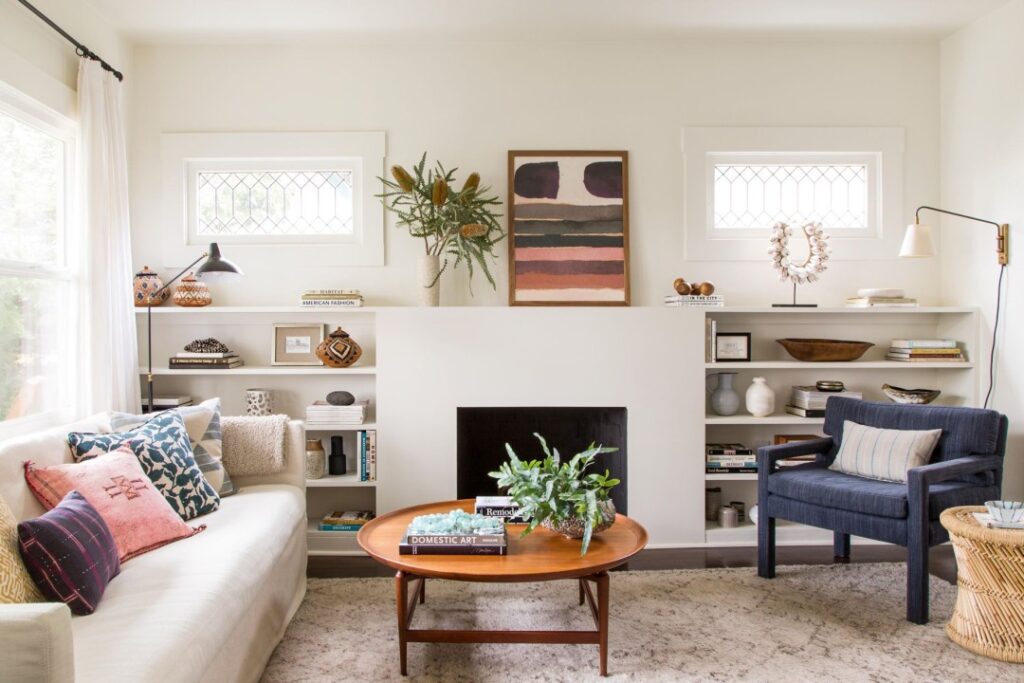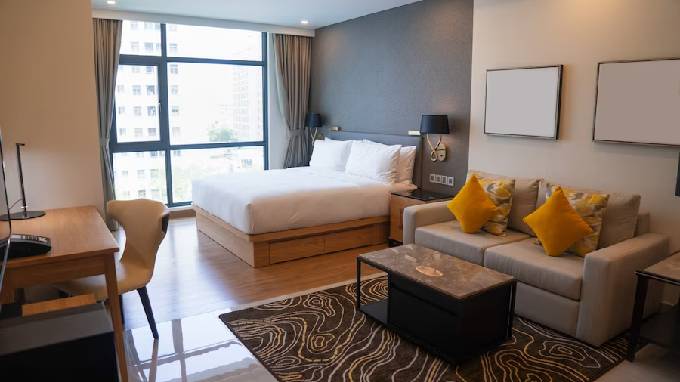
Living in a small space doesn’t mean you have to compromise on style or functionality. With the right design strategies, you can transform compact areas into cozy, efficient, and visually appealing environments. This blog explores practical and creative design tips for making the most of small living spaces, including advanced insights and lesser-known techniques.
1. Embrace multi-functional furniture
In small spaces, furniture that serves multiple purposes is invaluable. Multi-functional pieces maximize utility while minimizing clutter.
Key ideas:
Sofa beds: perfect for living rooms that double as guest rooms.
Extendable tables: ideal for dining areas that need to accommodate more people occasionally.
Ottomans with storage: provide extra seating, a footrest, and hidden storage.
Statistical insight: according to a study by the national association of home builders (nahb), 42% of homeowners in small spaces prioritize multi-functional furniture to optimize their living areas.
2. Maximize vertical space
Vertical space is often underutilized in small homes. By thinking upwards, you can significantly increase your storage and functionality.
Key ideas:
Tall shelving units: use tall bookcases or shelving systems to store items without occupying floor space.
Wall-mounted storage: install wall-mounted cabinets, hooks, and racks in kitchens, bathrooms, and entryways.
Loft beds: in bedrooms, especially kids’ rooms, loft beds create additional space underneath for a desk or seating area.
Statistical insight: according to houzz, incorporating vertical storage solutions can free up to 25% of the floor space in small homes.
3. Use light colors and reflective surfaces
Light colors and reflective surfaces can make a small space feel larger and more open by maximizing the light and creating a sense of continuity.
Key ideas:
Light wall colors: whites, pastels, and light neutrals reflect light, making rooms feel airy and spacious.
Mirrors: strategically place mirrors to reflect light and give the illusion of a larger space.
Glossy finishes: use glossy tiles, countertops, and furniture finishes to enhance the sense of depth and brightness.
Statistical insight: a report by the american society of interior designers (asid) found that using light colors and reflective surfaces can increase the perceived size of a room by up to 30%.
4. Implement clever storage solutions
Effective storage solutions are essential for maintaining a clutter-free and organized small space.
Key ideas:
Under-bed storage: utilize storage bins or drawers under the bed for seasonal clothing, shoes, or extra linens.
Built-in furniture: custom-built furniture, such as built-in benches with storage or recessed shelving, can maximize every inch of available space.
Hidden storage: furniture with hidden compartments, like coffee tables or beds with storage drawers, keeps essentials out of sight but easily accessible.
Statistical insight: according to ikea, efficient storage solutions can increase usable space in small homes by 20%.
5. Create zones
Even in open-plan small spaces, creating distinct zones for different activities can enhance functionality and organization.
Key ideas:
Rugs and furniture arrangement: use area rugs and strategic furniture placement to delineate different areas, such as living, dining, and working spaces.
Room dividers: use lightweight room dividers, curtains, or open shelving units to separate areas without closing off the space.
Color coding: differentiate zones by using varied color schemes or decor styles for each area.
Statistical insight: a survey by apartment therapy found that zoning can improve the functionality of small spaces by 25%.
6. Opt for open and transparent elements
Open and transparent elements help maintain a sense of openness and flow in small spaces.
Key ideas:
Glass furniture: glass tables and shelves take up less visual space and make rooms feel more open.
Open shelving: use open shelves instead of bulky cabinets to display items without overwhelming the room.
Translucent partitions: instead of solid walls, use translucent or frosted glass partitions to separate areas while maintaining light flow.
Statistical insight: the journal of environmental psychology reports that transparent elements in interior design can enhance the perception of space by 20%.
7. Personalize with care
Personal touches make a space feel like home, but in small spaces, it’s important to strike a balance between personalization and clutter.
Key ideas:
Curated decor: select a few meaningful decor pieces that reflect your personality without overcrowding the space.
Rotating displays: change out decorative items seasonally or periodically to keep the space fresh and uncluttered.
Functional decor: choose decor items that also serve a purpose, such as decorative baskets for storage or art that doubles as a bulletin board.
Statistical insight: a study by better homes & gardens found that homeowners who curated their decor in small spaces reported a 30% increase in overall satisfaction with their living environment.
Advanced tips
1. Integrate smart home technology
Smart home technology can optimize the functionality of small spaces by allowing for remote control of lighting, climate, and security.
Key ideas:
Smart lighting: use smart bulbs and lighting systems to adjust the ambiance and improve energy efficiency.
Smart thermostats: control heating and cooling remotely to save space and energy.
Voice-controlled devices: utilize voice-controlled assistants to manage various functions without the need for extra remote controls or switches.
Statistical insight: according to statista, the adoption of smart home technology can improve space utilization and energy efficiency by up to 20%.
2. Customize with modular furniture
Modular furniture allows for flexibility and customization, adapting to the changing needs of small space living.
Key ideas:
Sectional sofas: modular sectionals can be rearranged to fit different layouts and uses.
Stackable and foldable furniture: chairs, tables, and storage units that can be stacked or folded away when not in use save valuable space.
Adjustable shelving: modular shelving systems can be customized to fit various spaces and storage needs.
Statistical insight: a report by the furniture today market research found that modular furniture can increase the adaptability and functionality of small spaces by 25%.
Conclusion
Transforming small spaces into functional, stylish, and comfortable areas is achievable with thoughtful design strategies. By embracing multi-functional furniture, maximizing vertical space, using light colors and reflective surfaces, implementing clever storage solutions, creating zones, opting for open elements, and personalizing with care, you can make the most of your compact living space. Advanced tips like integrating smart home technology and using modular furniture further enhance the potential of small spaces. With these insights, you can create a home that is both beautiful and practical, no matter the size.


 Ensuring the Safety of Your Wisconsin Home’s Roof: When to Consult a Roofing Expert
Ensuring the Safety of Your Wisconsin Home’s Roof: When to Consult a Roofing Expert  Enhance Your Comfort with Premier Gas Water Heater Installations in Red Wing, Minnesota
Enhance Your Comfort with Premier Gas Water Heater Installations in Red Wing, Minnesota  Creating Inviting Outdoor Spaces: The Benefits of Outdoor Fireplaces in the Twin Cities
Creating Inviting Outdoor Spaces: The Benefits of Outdoor Fireplaces in the Twin Cities  Why Are Real Estate Serviced Apartments An Ideal Investment?
Why Are Real Estate Serviced Apartments An Ideal Investment?  How a Solar Company Designs Custom Solutions for Your Home
How a Solar Company Designs Custom Solutions for Your Home  Creative Uses of LED Strip Lighting for Accent Lighting
Creative Uses of LED Strip Lighting for Accent Lighting  Top Security Features to Look for in a Garage Door
Top Security Features to Look for in a Garage Door  Comprehensive Guide to Mold Removal in Hunterdon County: Safeguarding Your Home and Health
Comprehensive Guide to Mold Removal in Hunterdon County: Safeguarding Your Home and Health  Risks of Asbestos in Home Furnaces
Risks of Asbestos in Home Furnaces  Quartz Countertops Sacramento: Enhancing Homes with Timeless Elegance
Quartz Countertops Sacramento: Enhancing Homes with Timeless Elegance